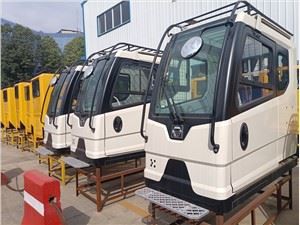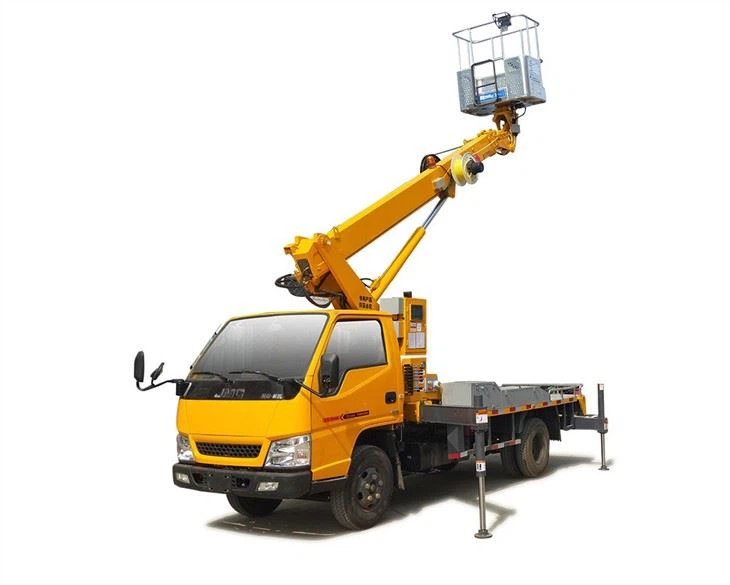Crane Carrier Garbage Truck: The Future of Waste Management

Introduction
The crane carrier garbage truck is revolutionizing the waste management industry by integrating two vital functionalities: a crane for lifting and a refuse collection system. With urban areas increasing in population and waste production, municipalities are looking for innovative solutions to optimize waste disposal. This article will explore the intricacies of crane carrier garbage trucks, their design, functionality, advantages, challenges, and the future trends shaping this industry. By the end of this comprehensive guide, you’ll gain a deep understanding of crane carrier garbage trucks and their role in efficient waste management.

What is a Crane Carrier Garbage Truck?
A crane carrier garbage truck is a specialized vehicle designed to carry both waste materials and equipment necessary for lifting heavy loads. It features a built-in crane that can be utilized in various operations, such as lifting large bins, dumpsters, or heavy items that require disposal. The dual purpose of carrying waste and lifting heavy objects makes it versatile and improves urban waste collection efficiency.
Key Components of a Crane Carrier Garbage Truck
- Chassis: The chassis is the base frame that supports the truck body, crane, and all attached components. It is engineered for strength and reliability.
- Crane: A hydraulic crane that enables lifting of heavy objects and dumpsters to facilitate waste collection.
- Compactor: An integrated compacting system that compresses waste, allowing for increased load capacity.
- Cab: The driver’s cabin equipped with advanced controls for operating both the crane and waste collection system.
- Waste Container: A specialized bin or container that holds waste until delivered to a disposal site.
How Crane Carrier Garbage Trucks Work
Operating a crane carrier garbage truck involves several steps, from waste collection to disposal. Here’s a breakdown of the entire process:
Step 1: Collection Schedule
Municipalities typically schedule regular waste collection times. The operators follow these schedules to visit neighborhoods efficiently.
Step 2: Positioning the Truck
The driver positions the truck next to the waste containers or dumpsters that need to be emptied. This often involves navigating through narrow streets and maneuvering around obstacles.
Step 3: Operating the Crane
Once the truck is in position, the operator uses controls within the cab to extend the crane and retrieve the waste containers. This can be done efficiently without requiring additional manpower, thereby saving time and reducing labor costs.
Step 4: Compacting Waste
After lifting the waste container, it is then placed into the compactor section of the truck. The compactor compresses the waste, maximizing space and ensuring that fewer trips are needed to disposal sites.
Step 5: Transportation to Disposal Site
Once the waste is collected and compacted, the truck transports it to the designated disposal site or landfill. Efficient routing is vital to minimize driving distances and enhance fuel efficiency.
The Advantages of Crane Carrier Garbage Trucks
Crane carrier garbage trucks offer numerous advantages over traditional waste management vehicles. Here are some key benefits:
1. Increased Efficiency
By integrating the crane and garbage collection functionality, these trucks streamline waste collection processes, reducing the time and manpower needed for on-site operations.
2. Versatile Applications
These trucks are not limited to just collecting garbage; they can also lift construction debris, bulky items, and other heavy loads, making them valuable for various urban organizations.
3. Improved Safety
With reduced manual handling of heavy items, the risk of accidents and injuries among laborers is significantly diminished. The crane allows waste to be lifted from a safe distance.
4. Environmental Impact

Advanced compacting technology helps in reducing the overall number of trips to disposal sites, thus lowering carbon emissions associated with transportation.
Challenges in Using Crane Carrier Garbage Trucks
While crane carrier garbage trucks offer significant advantages, they also present challenges that operators and municipalities must consider.
1. Initial Investment Costs
The purchase price of crane carrier garbage trucks can be considerably higher than traditional garbage trucks. Budget constraints can be a significant hurdle for smaller municipalities.
2. Maintenance Expenses
With additional components such as cranes and compacting machinery, maintenance costs can be higher. Regular servicing is essential to keep the equipment in optimal condition.
3. Operator Training
Specialized training is required for operators to efficiently and safely use the crane and waste management system, leading to additional costs and time investment.
4. Limited Accessibility
Some urban areas are characterized by narrow streets or limited access, hindering the mobility of larger trucks, which may require smaller vehicles for certain routes.
Practical Examples of Usage
Municipal Waste Management
Many cities have adopted crane carrier garbage trucks to enhance their waste management services. For instance, New York City has successfully integrated these vehicles into their waste collection fleet, resulting in reduced labor costs and increased efficiency during pickups.
Construction Sites
Construction companies utilize crane carrier garbage trucks to remove construction waste, such as debris and other heavy materials. Their ability to lift heavy loads enables quick cleanup and adherence to safety regulations.
Trends Shaping the Future of Crane Carrier Garbage Trucks
The waste management sector is evolving rapidly, with technology playing a significant role. Below are some emerging trends:
1. Advanced Telemetry Systems
The incorporation of telemetry systems allows fleet managers to monitor vehicle performance, waste levels, and maintenance needs in real-time, enhancing operational efficiency.
2. Electric Crane Carrier Trucks
As cities aim to reduce their carbon footprints, the development of electric crane carrier garbage trucks is underway, promising lower operating costs and lower emissions.
3. Integration with Smart City Solutions
Smart waste management systems are increasingly being implemented, allowing for enhanced tracking of waste generation and collection, optimizing routes in real-time.
Comparing Crane Carrier Garbage Trucks with Other Waste Collection Vehicles
| Feature | Crane Carrier Garbage Truck | Traditional Garbage Truck |
|---|---|---|
| Functionality | Crane & Waste Collection | Waste Collection Only |
| Efficiency | High | Moderate |
| Operator Training | Specialized Required | Standard |
| Initial Cost | Higher | Lower |
| Maintenance | Higher | Standard |
Frequently Asked Questions (FAQ)
1. What is the primary advantage of a crane carrier garbage truck?
The primary advantage is its dual functionality, allowing for efficient waste collection and lifting of heavy items, reducing the need for additional manual labor.
2. How do crane carrier garbage trucks improve safety?
These trucks minimize manual handling of heavy loads, therefore reducing the risk of injuries associated with lifting and carrying heavy objects.
3. Are crane carrier garbage trucks environmentally friendly?
Yes, their advanced compacting capabilities lead to fewer trips to landfill, thereby reducing fuel consumption and emissions.
4. What type of training is needed for operators of crane carrier garbage trucks?

Operators need specialized training to operate both the crane and the waste management system safely and efficiently.
5. What costs are associated with owning a crane carrier garbage truck?
Costs can include initial purchase price, higher maintenance expenses, and training costs for operators.
6. Can crane carrier garbage trucks operate in narrow streets?
While they are versatile, their size can present challenges in narrow streets, necessitating careful planning and possibly the use of smaller vehicles for some routes.
